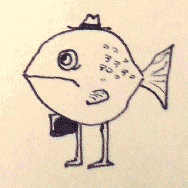1) What do mermaids eat?
Mermaids eat pretty much anything. Shellfish, fish fish, shark fish, porpoises – you name it. They have algae farms and oyster beds, so they must cultivate all sorts of other things. Once they're done eating everything, they probably toss the remains down deep sea trenches. Unless, of course, they grind it up into plaster to build palaces.
Deep sea mermaids living at the bottom of the open ocean probably eat whale carcasses that sink to the sea bed. Either that or mermaid trash that gets thrown down because they don't need it for plaster. Deep sea mermaids have separate cult rituals based on these two much-appreciated sources of food.
DONE. now:
2) What happens to mermaids when they die?
One good place to start is sea foam. We can consider classical sources here – Venus is famously depicted rising from the ocean in a clam shell, but artistic embellishment aside, the miss is said to have arisen from sea foam. Clearly sea foam is of some importance. (at this particular moment we can choose to ignore that idea that sea foam may be a convenient euphemism for obscuring some Olympian sexual misadventure). Since mermaids don't have reproductive organs, it's also likely that they come from sea foam, right? So why not turn into sea foam when they die?
That's what some mermaids think, at least; there's a big emphasis on Classics in high school there. There are, however, pointed arguments among mer university communities, sometimes mounting to trident duels – those few mermaids that do take their studies seriously are willing to fight to the death over them. Mer biologists and thermodynamititians tend to fall on the side of natural processes – sea foam cannot be accounted for simply by the effervescent bodily decay of mermaids.
The majority of mermaids, on the other hand (being disinclined to rigor on account of their love of play), are After-Foamers, also known as Foam Dissolutionists. Foam Dissolutionists believe firmly in the espumification of the merbody after death.
This is a good moment to bring up that mermaids don't have burials. Instead they drop the bodies of the dead down deep sea ravines in the course of an elaborate ceremony meant to commemorate the playfulness and mirth of the deceased individual. Merkings preside over these ceremonies with a dour air, as is their wont, since they're never allowed to have fun anyway. Furthermore, they like to keep the ceremonies going for as long as possible, since it's a great opportunity to exist undisturbed by sailors (there aren't that many sailors by deep sea ravines). Some merkings do this to purposefully make other mermaids suffer the deprivation of sailors, but others are genuinely glad for the opportunity of company. Plus it's not too bad, since mer funerals aren't sad; they're just boring, because there aren't any sailors to harass, or even funny-looking fish, since those ravines are kind of out of the way.
The ceremonies are long, and consist mostly of merkings trying to make sure mermaids don't sneak off to harass sailors. No one really knows what happens to the body beyond its descent, because they're all preoccupied with sailors in their own particular way. And no one reflects on the ceremony or its implications afterwards (except the biologists and thermodynamititians, who everyone ignores anyway).
Frankly, the most likely accounting of the disappearance of mer bodies after death is their being eaten by deep sea mermaids.


No comments:
Post a Comment